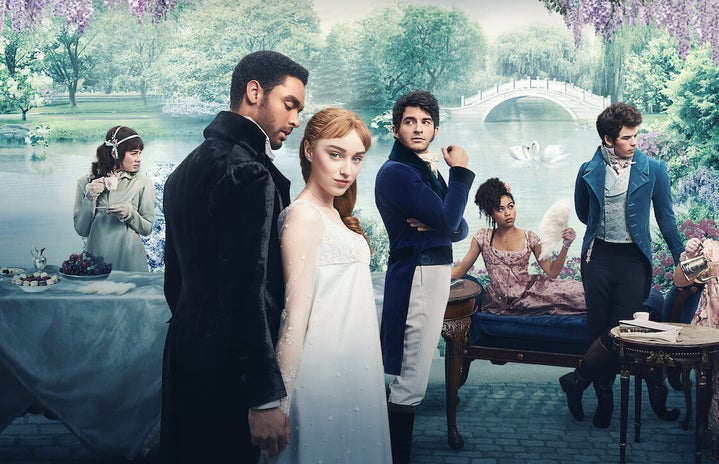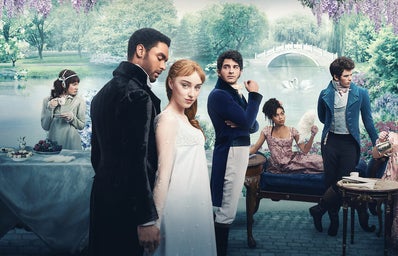*POSSIBLE SPOILERS AHEAD!*
“Bridgerton” is the eight-episode Netflix original that has reigned on televisions and laptop screens this winter. “Bridgerton” explores the marriage market of the early 1800s, through its twists and turns, and through the lense of an anonymous gossip author, Lady Whistledown. So, yeah, it’s Regency “Gossip Girl.” However, the show is extremely palatable for those that do not typically enjoy British films such as “Pride and Prejudice” or “Sense and Sensibility.” Why is this? Maybe its American creator and modernized settings could be the reason, but just how modernized is “Bridgerton?” Is this show even accurate to its time period?
Unlike the thick of the plot may have you believe, the show’s creator, Chris Van Dusen, states that the Duke of Hastings’ (Regé-Jean Page) persistence on not becoming a father is possibly the most inaccurate aspect of the show. At the time, it would be absurd to be so determined not to have children and carry on the family dynasty, especially a Duke. Men that were powerful and strong (yes, this is a time of the toxic-est masculinity) would only maintain this show of power by having children. Infertility, let alone just deciding not to have kids, was certainly subject to shame. Van Dusen suggests that withdrawal also would be improbable as Simon’s method of birth control.
Perhaps the most surprising in its accuracy, aristocratic London society was highly into street gossip as Lady Whistledown (voiced by Julie Andrews) depicts. Scandals and cheats of the London high society were often discussed in newspapers and publications. Although, these gossip spreads would most likely disguise the identity of those mentioned through initials. Eloise (Claudia Jesse) mentions this in the show’s first episode, speaking of Lady Whistledown’s paper, “No, no, this one is different. This one lists subjects by name, in full.”
As Daphne (Phoebe Dynevor) confides in us, and in her maid, Rose (Molly McGlynn), she knew nothing of the birds and the bees heading into her marriage. This is quite accurate. Unmarried women were severely uneducated on the subject of sex. Considering there was no such thing as formal sex education, coupled with the fact that married (as well as unmarried) men, not women, were encouraged to take sexual liberties, there was almost no way for the young women to know. Further, women were expected to be unaware of sexual happenings in order to appear fully pure for her husband on the wedding night.
Everyone’s favorite subject: the costume design. The show’s clothing was definitely clearly inspired by the Regency era, but as the show’s costume designer Ellen Mirojnick states, elements were definitely taken from different eras. The show went a bit more over-the-top in glitter and embellishments than would’ve been used at the time. “Bridgerton” created its own style by keeping the general silhouettes and shape of the era while including these brighter, “in-your-face” materials. The show’s style ended up being a close resemblance to couture clothing that may have been seen in magazines or on a runway.
Typically, I’m one to stray away from British historical fiction, but “Bridgerton” is easily now one of my favorite shows. From inclusive casting, to highlighting Eloise’s independence, to modernized vocabulary and scenery, “Bridgerton” has captivated a new audience, eager for its (recently confirmed) second season.



